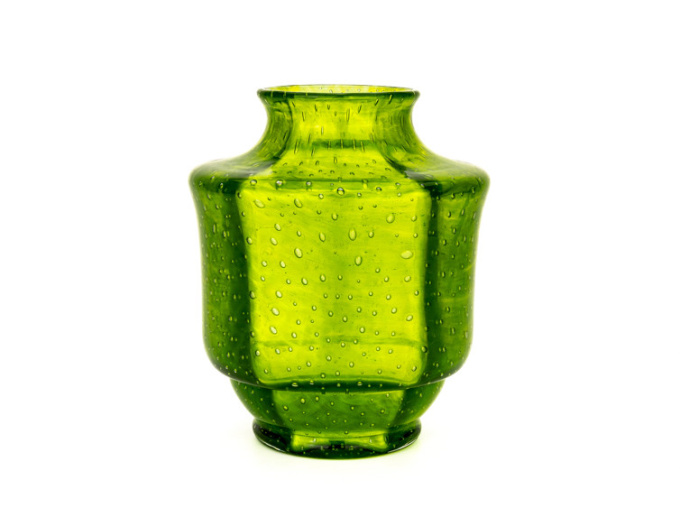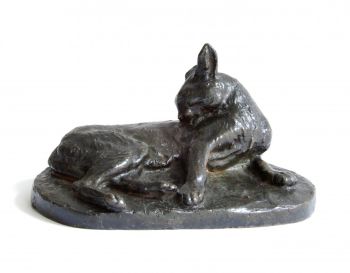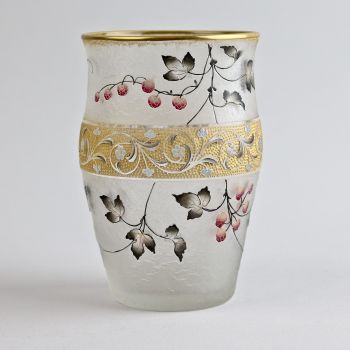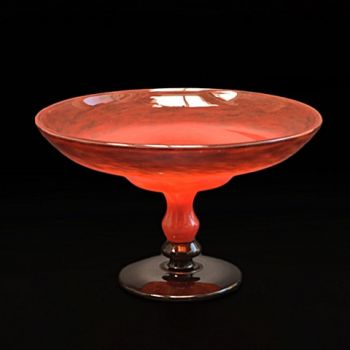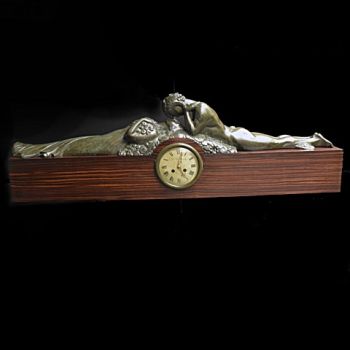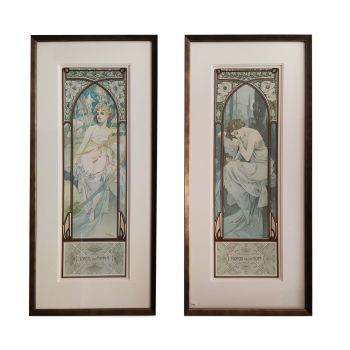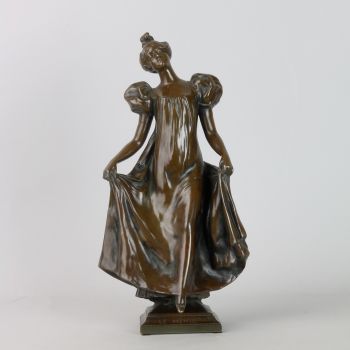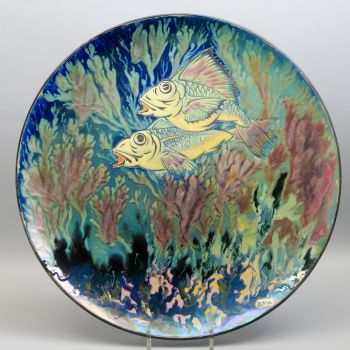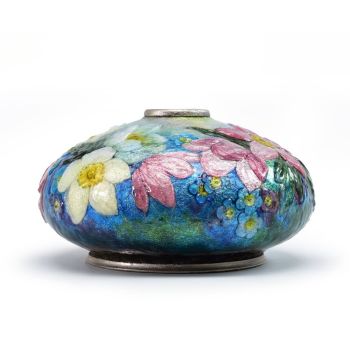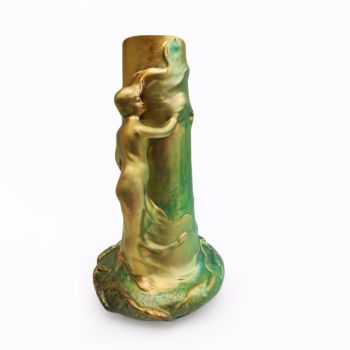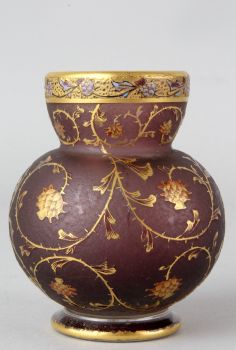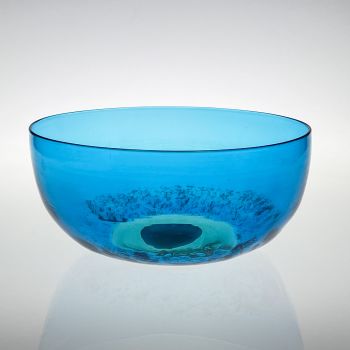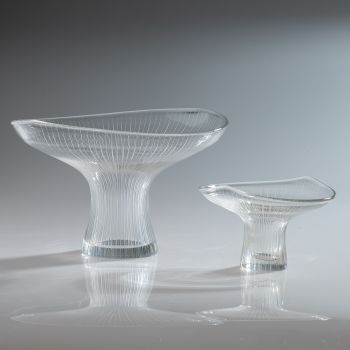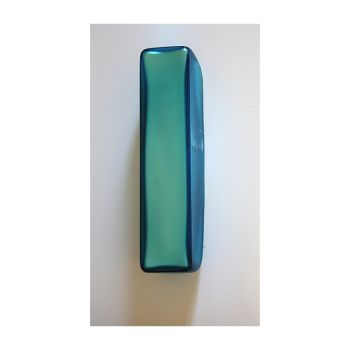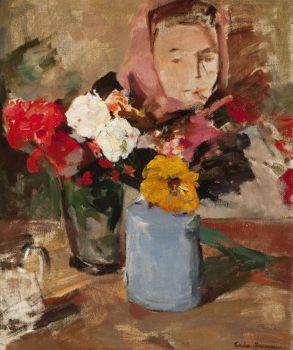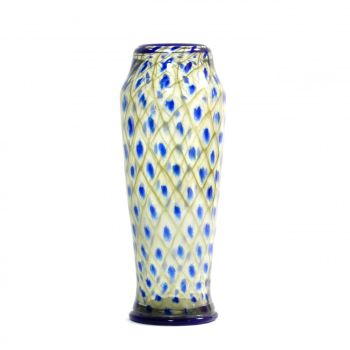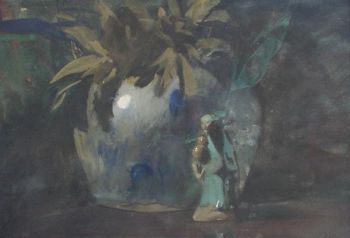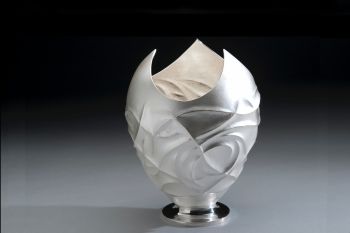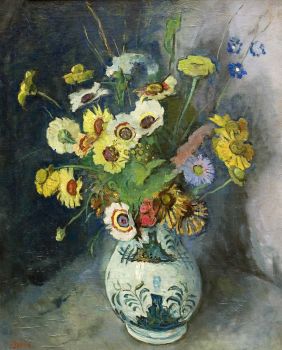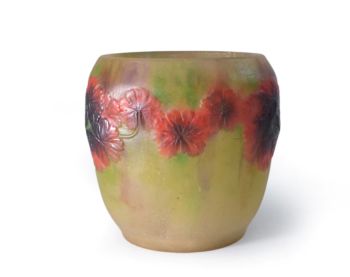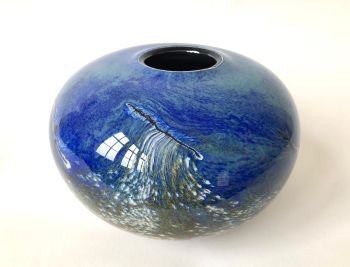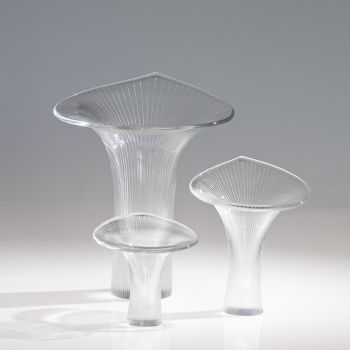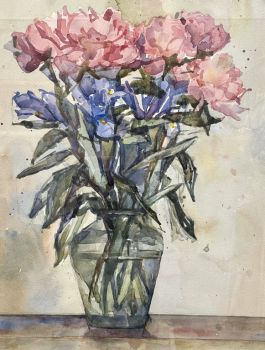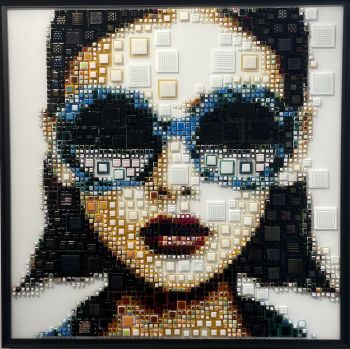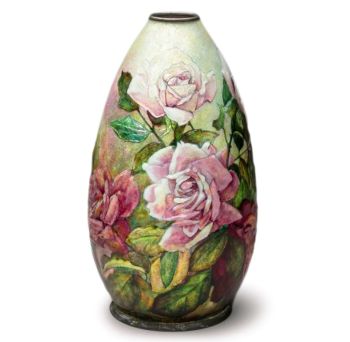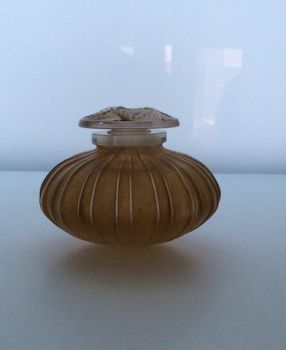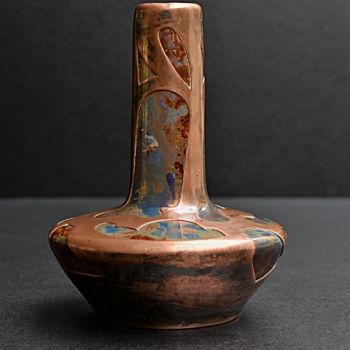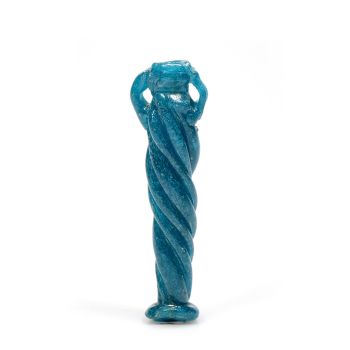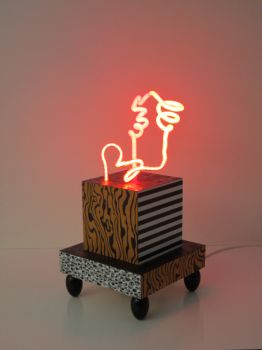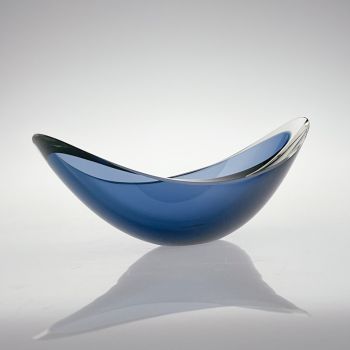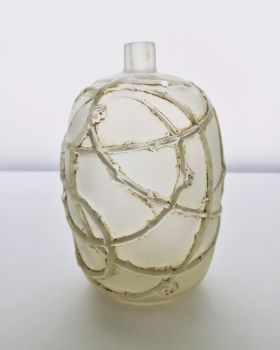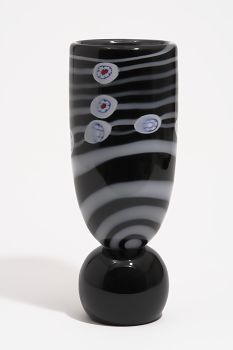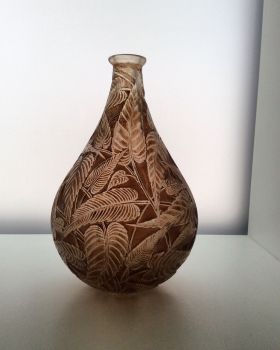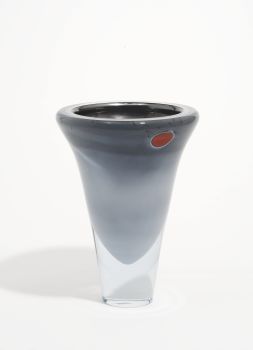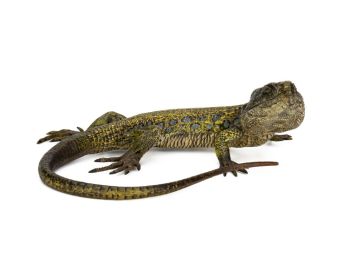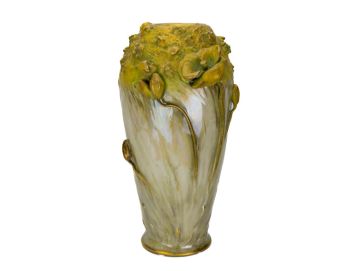Johann Loetz Witwe – Ausführung 140 – “Controlled air bubbles” in ground color Green 1900 - 1909
Johann Loetz (Lötz) Witwe Klostermühle
Glas
14 cm, ø 12 cm
ConditionExcellent
Preis auf Anfrage
Antiques Emporium
- Über KunstwerkThis masterpiece by Johann Loetz Witwe executed in Ausführung 140 is a true testament to the artistry and innovation of the Jugendstil era.
Adorned in a captivating ground color of verdant green, this vase exudes a sense of natural splendor that is both captivating and evocative. However, its true beauty lies in the intricate layers of glasswork that adorn its surface, each telling a story of craftsmanship and creativity.
At its core, the vase boasts an inner layer of titania glass threads, delicately woven to create a mesmerizing interplay of light and texture. These threads dance within the glass, casting enchanting shadows and lending an ethereal quality to the piece. Surrounding them is a layer of controlled air bubbles, suspended in a delicate dance that adds depth and intrigue to the vase’s design.
Finally, the outer layer of green glass encases this symphony of elements, providing a glossy finish that enhances the vase’s luminous presence. With each glance, new details emerge, inviting admiration and appreciation for the skill and artistry required to create such a masterpiece.
It’s important to note that while the accompanying pictures offer a glimpse into the vase’s beauty, they cannot fully capture the breathtaking colors and textures of the glass. The subtle nuances and iridescence of the glass can only be fully appreciated in person, adding to the allure and mystique of this remarkable piece.
Dimensions:
Height: 145mm / 5.71”
Diameter top: 65mm / 2.56”
Diameter body: 120mm / 4.72″
Literature:
Prestel – Böhmisch Glas 1880 – 1940 Band 1 Werkmonographie – Page 269. - Über Künstler
Etwas mehr als hundert Jahre existierte die Glashütte Lötz in Klostermühle, Österreich, ab 1840. Ihre Blütezeit erlebte sie jedoch zu Lebzeiten von Max Ritter von Spaun, dem Enkel des ursprünglichen Gründers Johann Lötz.
Von Spaun übernahm 1879 das Unternehmen und führte es bis 1908, ein Jahr vor seinem Tod. Er wurde von seinem technischen Spezialisten Eduard Prochaska unterstützt, und gemeinsam erfanden, entwarfen und produzierten sie eine ganze Reihe wunderbarer neuer Glasarten, erwarben mehrere Patente und gewannen Preise auf allen großen Weltausstellungen in den 1890er Jahren und in den ersten Jahren des 19. das neue Jahrhundert.
Die Firma Loetz gehörte zu den Vorreitern im Jugendstildesign und insbesondere im Bereich des schillernden Kunstglases. "Papillon"-Glas, wie die Vase links, wird heute manchmal als "Ölfleck"-Glas bezeichnet. Eine weitere beliebte Farbe von Loetz war bestrahltes Glas mit gezogenen Spuren, das als "Phenomenon" -Glas bezeichnet wird.
Es gab irritierte Vasen mit Bändern in Metallic-Farben, die sich über die Oberfläche schlängelten, und viele spektakuläre Designs mit applizierten Pfaden in schönen Farben oder einfach aus dem Glaskörper herausgezogen, um Griffe oder Dekorationen zu bilden.
Um 1900 begann das Unternehmen mit externen Designern zusammenzuarbeiten, und einige große Künstler entwarfen Stücke für Lotz, insbesondere Joseph Hofmann, Koloman Moser, Maria Kirchner und Hofstatter.
1908 wurde Loetz von Max von Spauns Sohn, auch Max genannt, übernommen, und obwohl es finanziell zu kämpfen hatte (Konkurs 1911 und erneut 1931), gab es mehrere große Designer, deren Arbeiten in diesen Jahren und durch die Kunst von Loetz produziert wurden Deko-Zeit. Dazu gehörten Adolf Beckert und Michael Powolny.
Sind Sie daran interessiert, dieses Kunstwerk zu kaufen?
Artwork details
Related artworks
Johann Loetz (Lötz) Witwe Klostermühle
Johann Loetz Witwe - Phänomen Genre 7773 – Orange1900 - 1910
Preis auf AnfrageAntiques Emporium
Johann Loetz (Lötz) Witwe Klostermühle
Johann Loetz Witwe – Jugendstil Cobalt Papillon vaas1900 - 1910
Preis auf AnfrageAntiques Emporium
1 - 4 / 7- 1 - 4 / 24
Gabriel Argy-Rousseau
Gabriël Argy-Rousseau – Crabes et Algues vase – 19201920 - 1929
Preis auf AnfrageAntiques Emporium
Amalric Walter
Amalric Walter & Henri Bergé – Crabe plumier1920 - 1929
Preis auf AnfrageAntiques Emporium
Johann Loetz (Lötz) Witwe Klostermühle
Johann Loetz Witwe - Phänomen Genre 7773 – Orange1900 - 1910
Preis auf AnfrageAntiques Emporium
1 - 4 / 24Jan Voerman sr
Still Life with flowers in a Chinese figurine1850 - 1900
Preis auf AnfrageKunsthandel Pygmalion
Johann Loetz (Lötz) Witwe Klostermühle
Johann Loetz Witwe – Jugendstil Cobalt Papillon vaas1900 - 1910
Preis auf AnfrageAntiques Emporium
Herman Bogman jr.
Flower still life of a nasturtium in a blue vase1950 - 1965
Preis auf AnfrageAdelwein Kunst
1 - 4 / 24Unbekannter Künstler
Ein seltenes Filigrana, ein Retortoli-Becher1550 - 1600
Preis auf AnfragePeter Korf de Gidts - Antiquairs
1 - 4 / 24Amalric Walter
Amalric Walter & Henri Bergé – Crabe plumier1920 - 1929
Preis auf AnfrageAntiques Emporium
Johann Loetz (Lötz) Witwe Klostermühle
Johann Loetz Witwe – Jugendstil Cobalt Papillon vaas1900 - 1910
Preis auf AnfrageAntiques Emporium
Gabriel Argy-Rousseau
Gabriël Argy-Rousseau – Crabes et Algues vase – 19201920 - 1929
Preis auf AnfrageAntiques Emporium
Johann Loetz (Lötz) Witwe Klostermühle
Johann Loetz Witwe - Phänomen Genre 7773 – Orange1900 - 1910
Preis auf AnfrageAntiques Emporium
1 - 4 / 12

